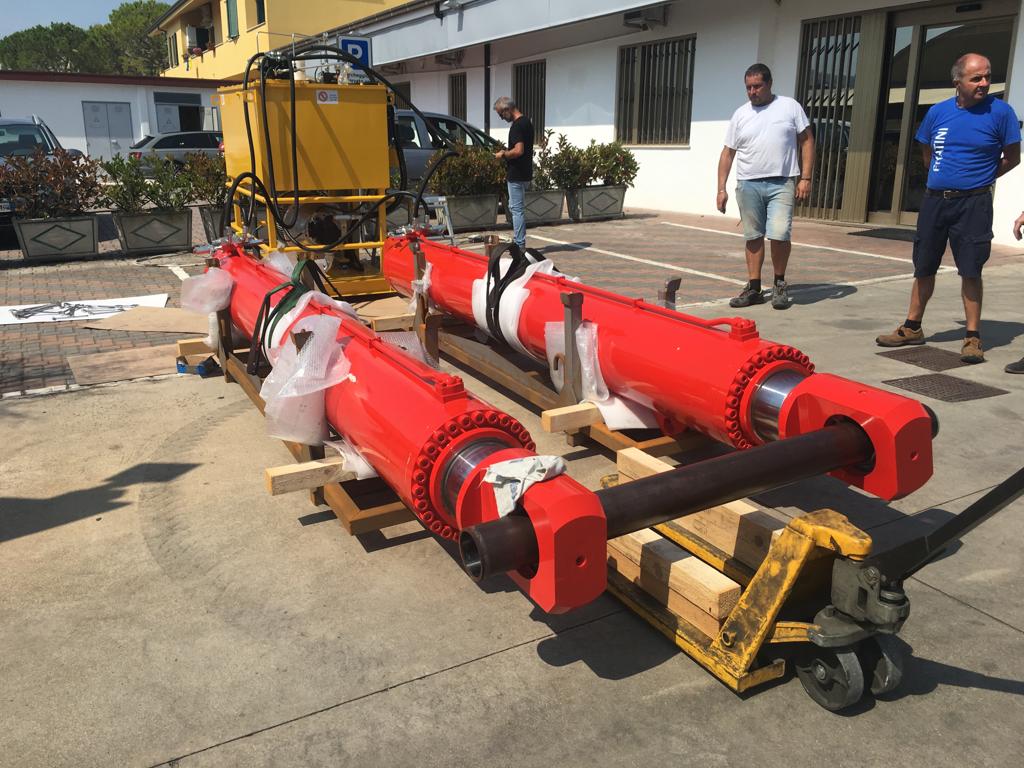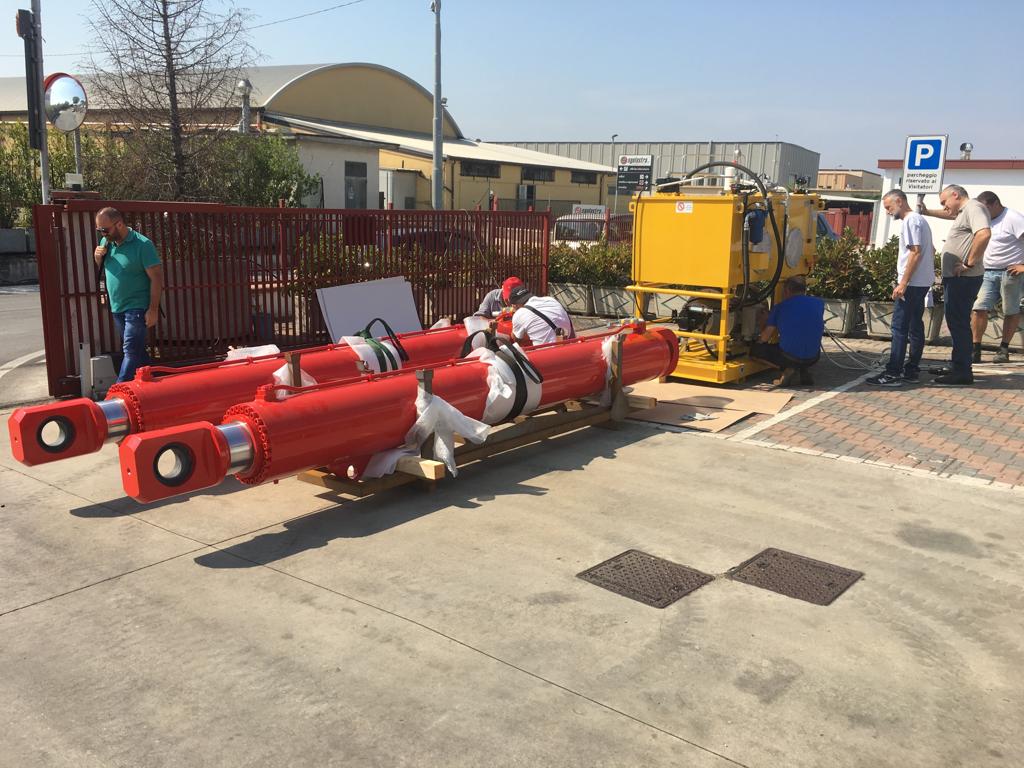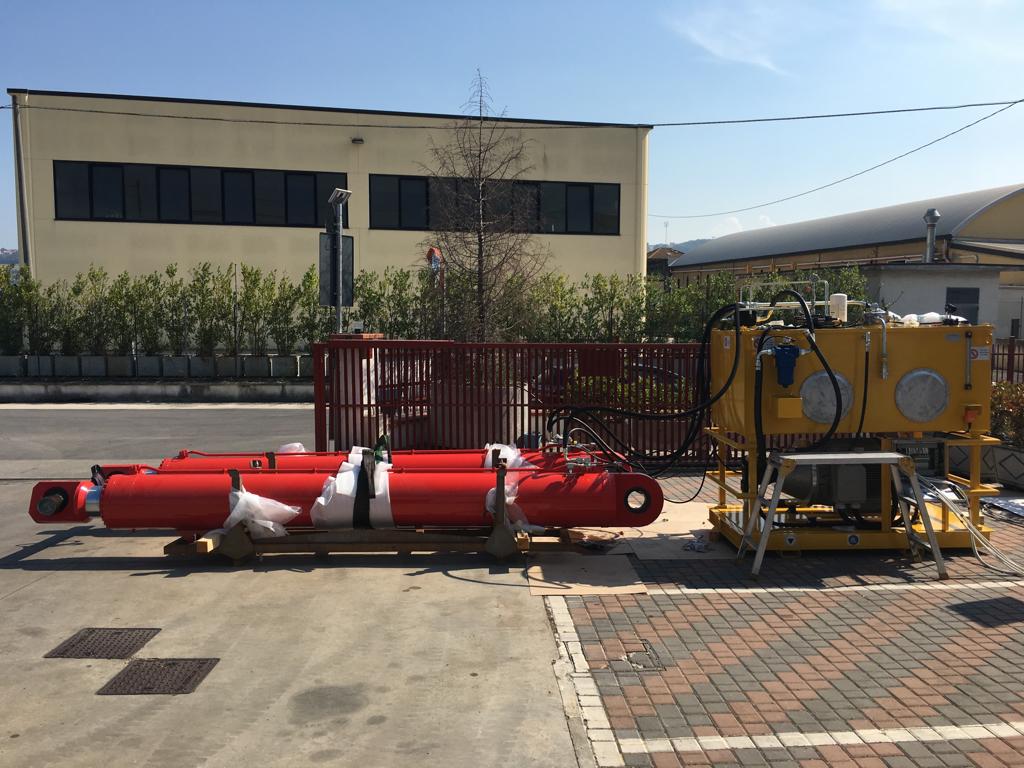Hydraulic cylinders are fundamental components in the field of mechanical and hydraulic engineering. These devices, also known as hydraulic cylinders, play an essential role in numerous industrial applications, from automation to construction, providing incredible mechanical force, precision, and reliability. In this article, we will explore the history, functioning, and how to calculate the forces associated with hydraulic cylinders.
History of the Invention of Hydraulic Pistons
To fully understand the functioning and importance of hydraulic cylinders, it is necessary to examine their history.
The beginning of this story dates back to ancient times when architects and engineers used hydraulics to create complex projects, such as the irrigation systems in the Hanging Gardens of Babylon. However, modern hydraulic cylinders are the result of subsequent developments.
The Industrial Revolution of the 19th century was a critical moment in the history of hydraulic cylinders. In 1795, Joseph Bramah, a British inventor, patented the “hydraulic press,” which utilized Pascal’s principle to generate considerable force through hydraulic pressure transfer. This invention was the precursor to modern hydraulic cylinders. Later, in 1850, engineering pioneer Bramah introduced the concept of a double-acting hydraulic cylinder, which remains one of the most common types of cylinders today.
What Are Hydraulic Cylinders Used For?
Hydraulic cylinders serve to convert the pressure of a fluid into mechanical energy. This is essential in a wide range of applications, including:
- Lifting and Moving: Cylinders are widely used to lift heavy loads, such as those in crane arms or industrial machines.
- Automation: In industrial automation, hydraulic cylinders control the precise movement of actuators and robots.
- Pressing and Punching: In the metalworking industry, cylinders are used to perform pressing and punching operations.
- Mobile Applications: In vehicles, such as bulldozers and agricultural machinery, hydraulic cylinders are responsible for raising blades and implements.
- Braking and Suspension: Hydraulic cylinders are used in the braking and suspension systems of vehicles, ensuring safe driving.
What Is a Hydraulic Cylinder?
A hydraulic cylinder is a mechanical device consisting of a cylindrical tube called a barrel, a piston, and hydraulic fluid. The piston separates the barrel into two chambers: a piston chamber and a body chamber. Hydraulic oil is pumped into the cylinder to create pressure that pushes the piston in a specific direction, generating linear motion or force.
Single-Acting Cylinder vs. Double-Acting Cylinder
A single-acting hydraulic cylinder has only one piston chamber, while a double-acting cylinder has two chambers. The former, specifically the single-acting cylinder, can generate force only in one direction and requires an external force to return to its initial position. In contrast, the double-acting cylinder can generate force during both expansion and contraction, making it more versatile.
How to Calculate the Force of a Hydraulic Cylinder
To calculate the force of a hydraulic cylinder, it is necessary to know the pressure of the fluid and the area of the piston. The fundamental formula is:
Force = Pressure x Area of the Piston
Where pressure is measured in pascals (Pa) or “bars,” and the area of the piston is in square meters (m²).
Operation of a Hydraulic Cylinder
The operation of a hydraulic cylinder is based on Pascal’s principle, which states that the pressure in a fluid at rest is the same in all directions. When hydraulic fluid is pumped into the piston chamber, it creates a uniform pressure that pushes the piston in a specific direction. This linear movement can be harnessed to perform mechanical work.
In Conclusion
Hydraulic cylinders are essential devices in mechanical and hydraulic engineering, used in a wide range of industrial applications. Their history dates back to pioneering inventions, and their operation is based on fundamental physical principles. With the ability to generate incredible forces, hydraulic cylinders continue to play a vital role in society today.



